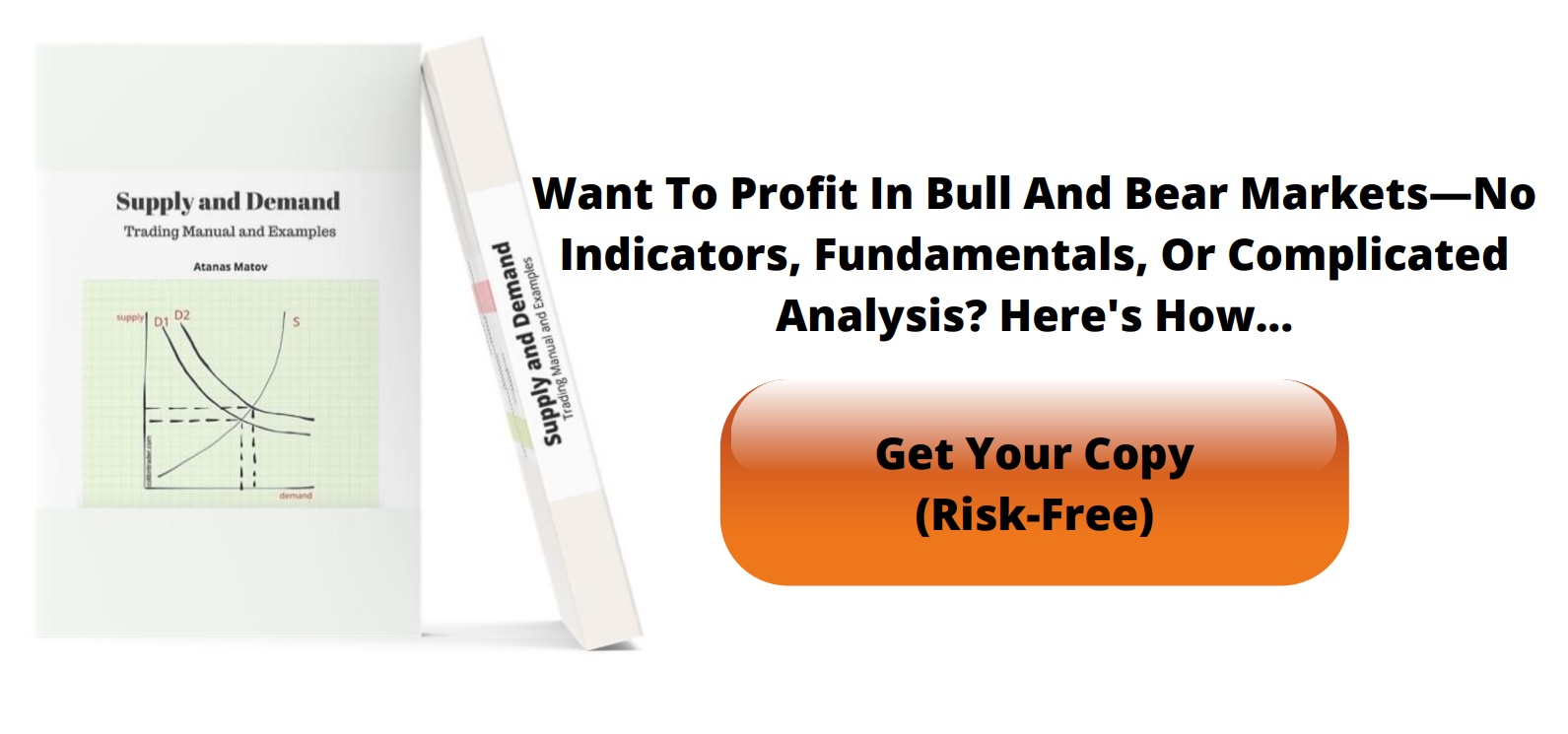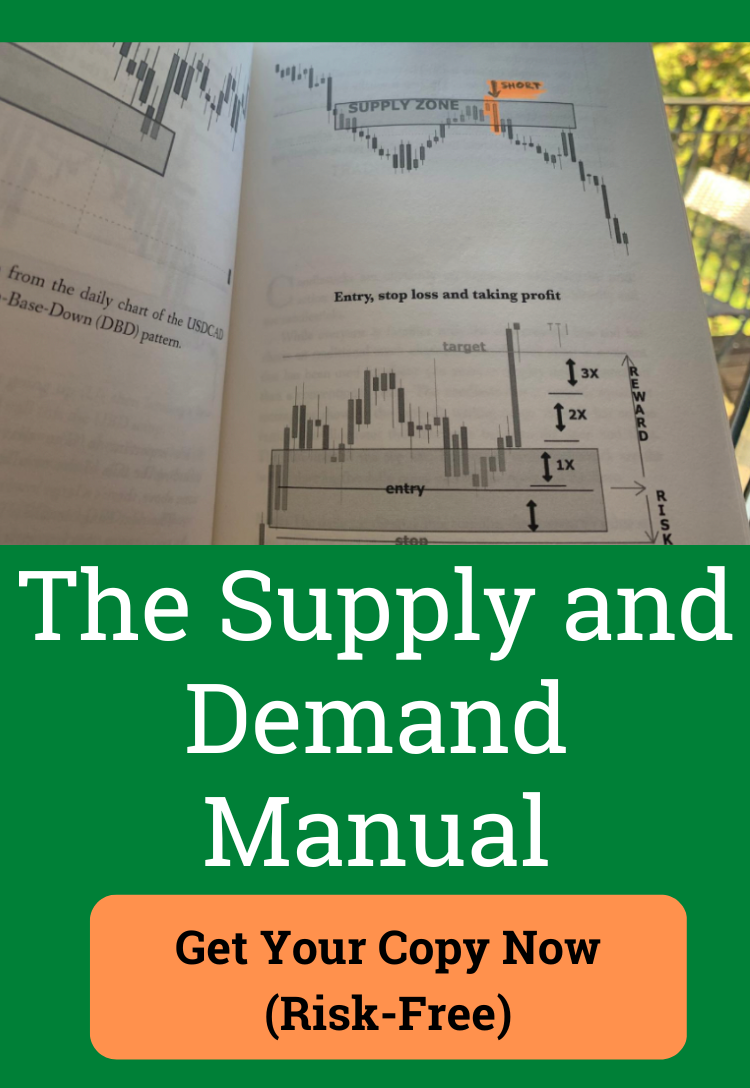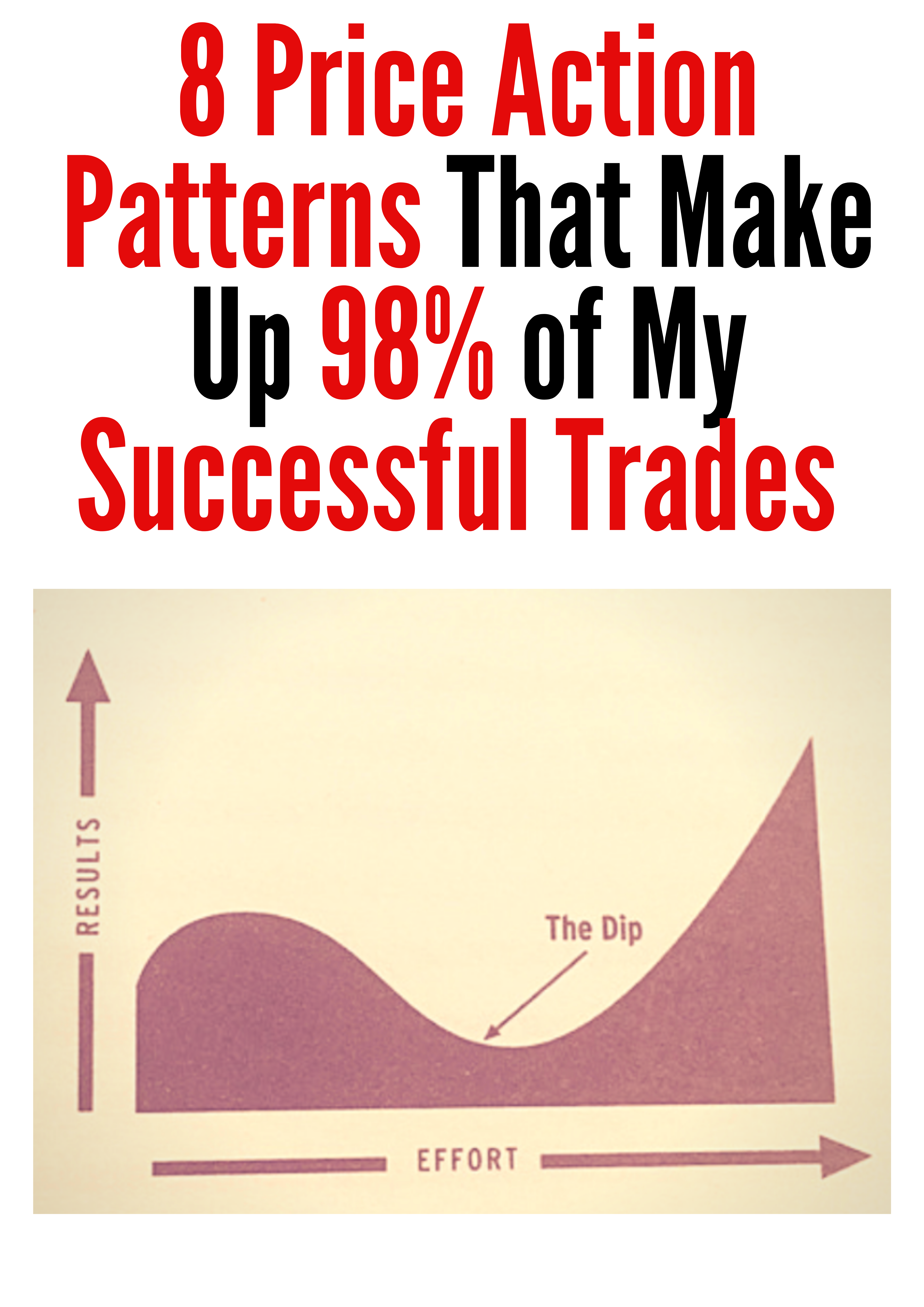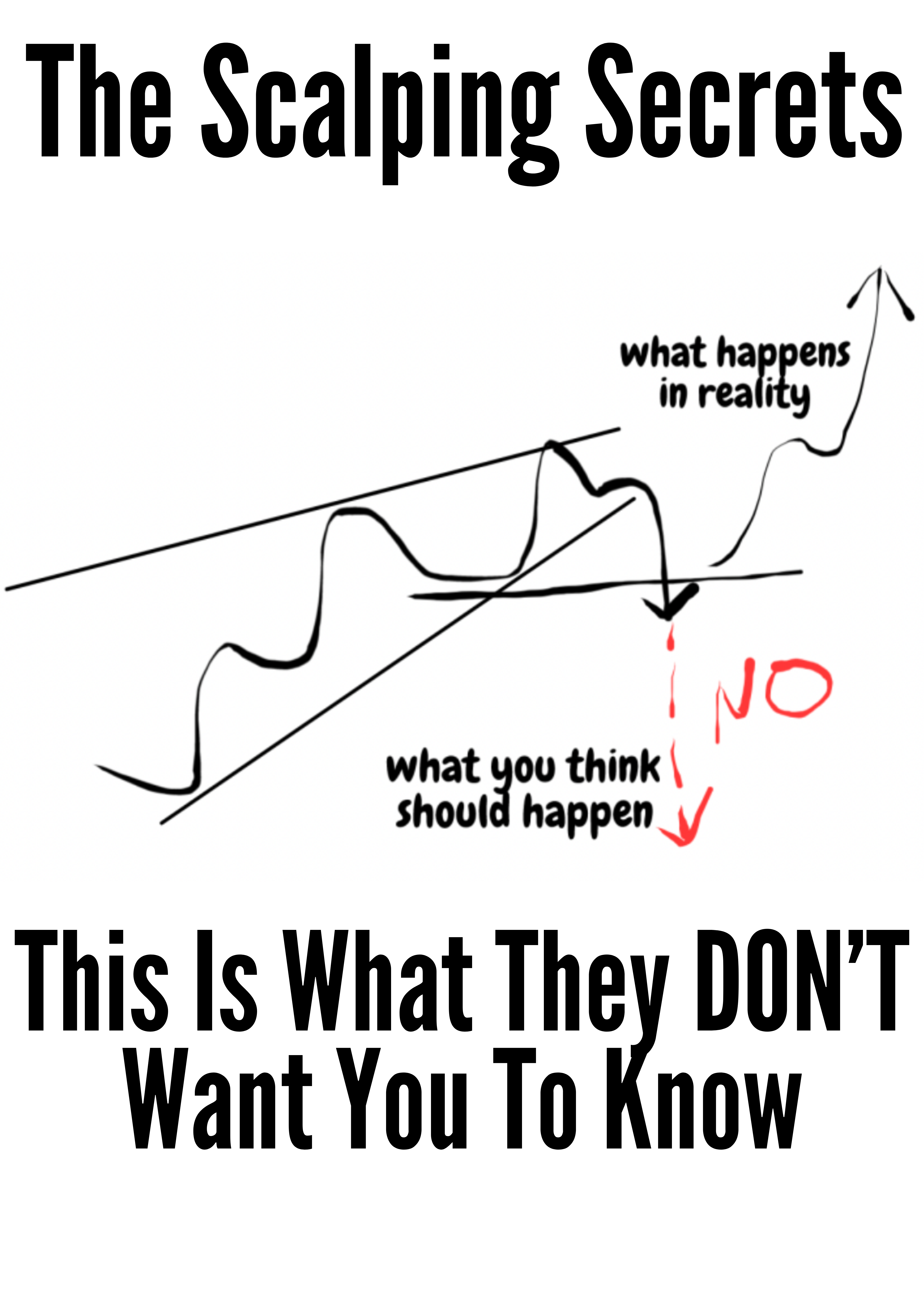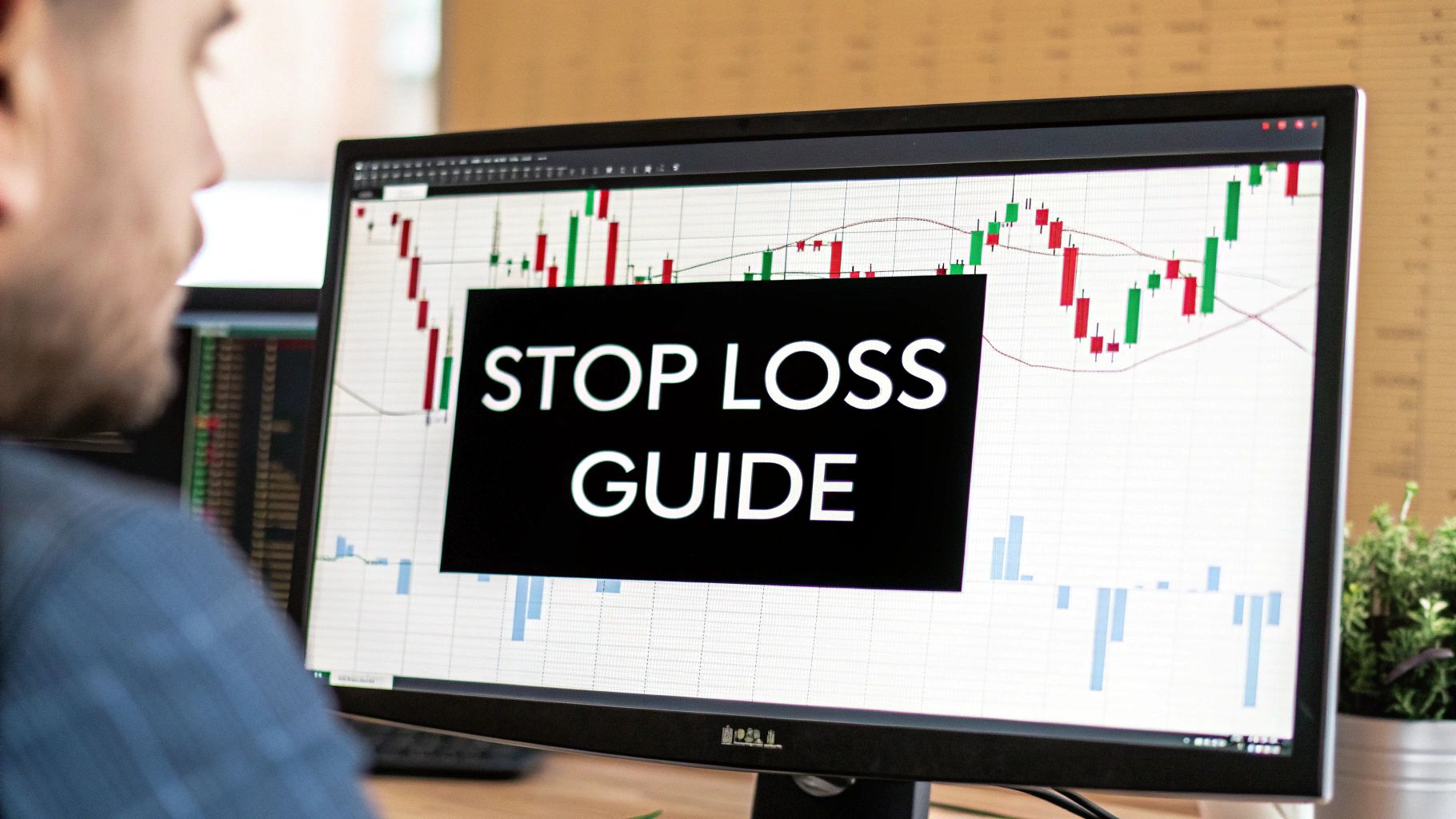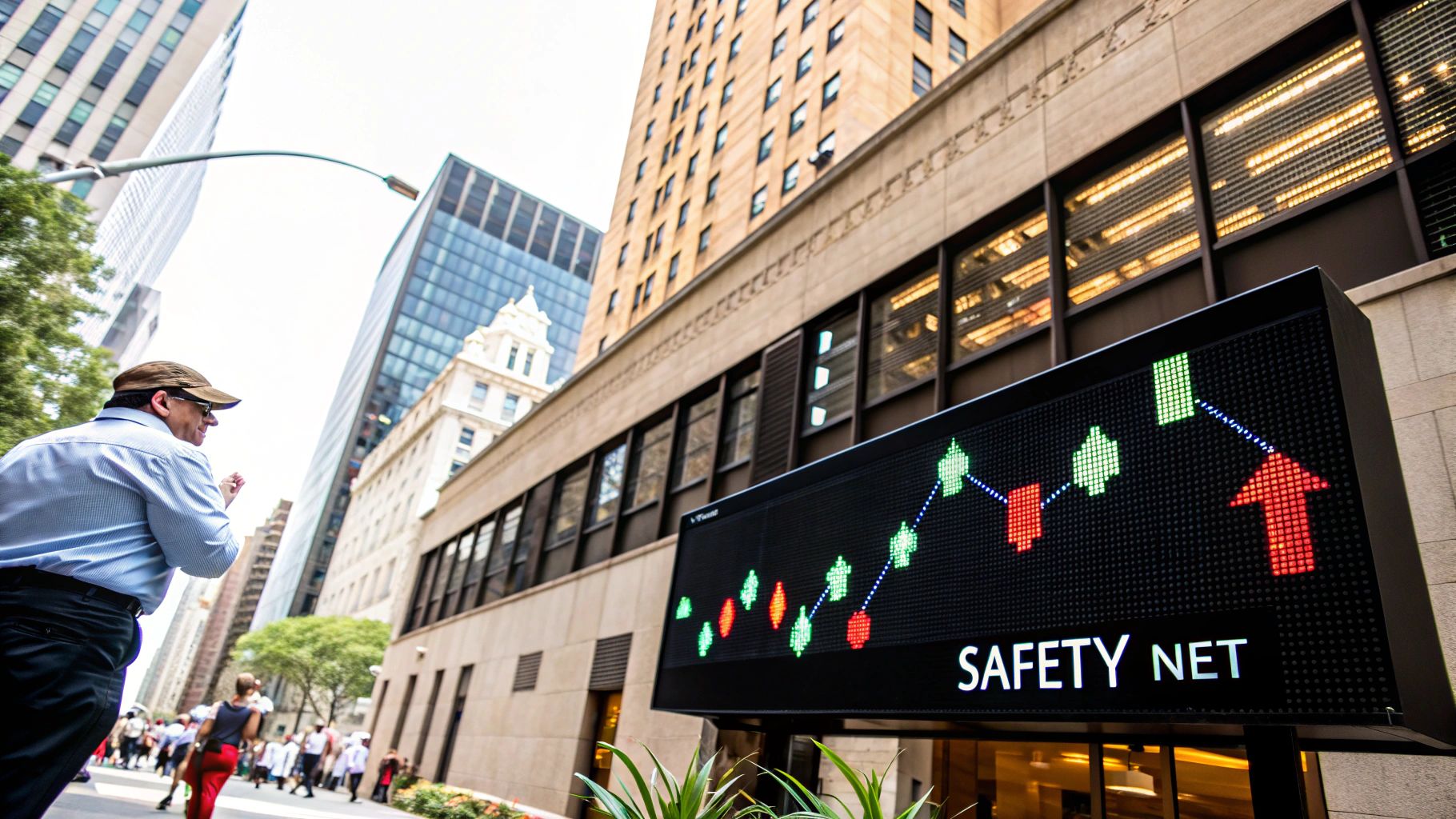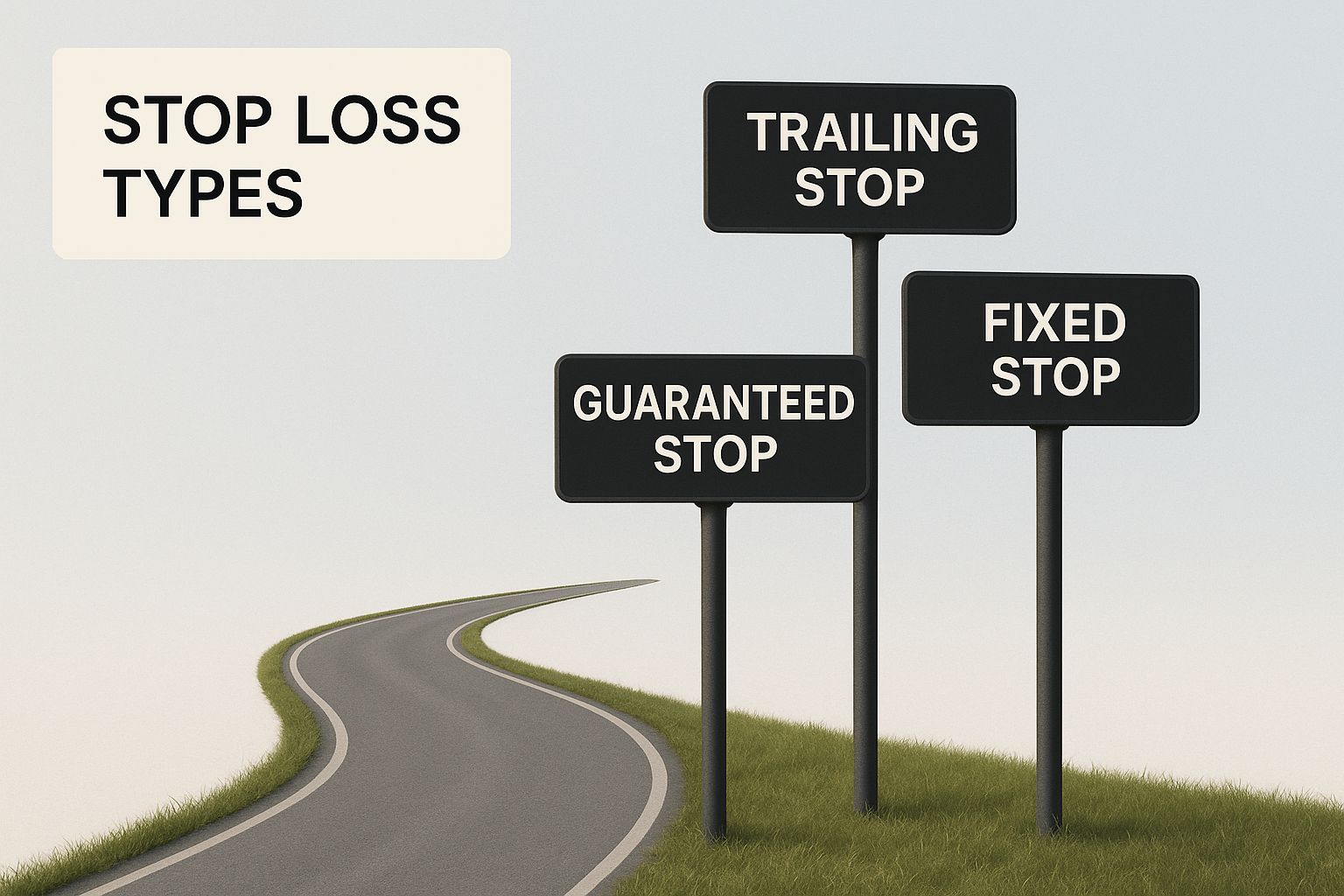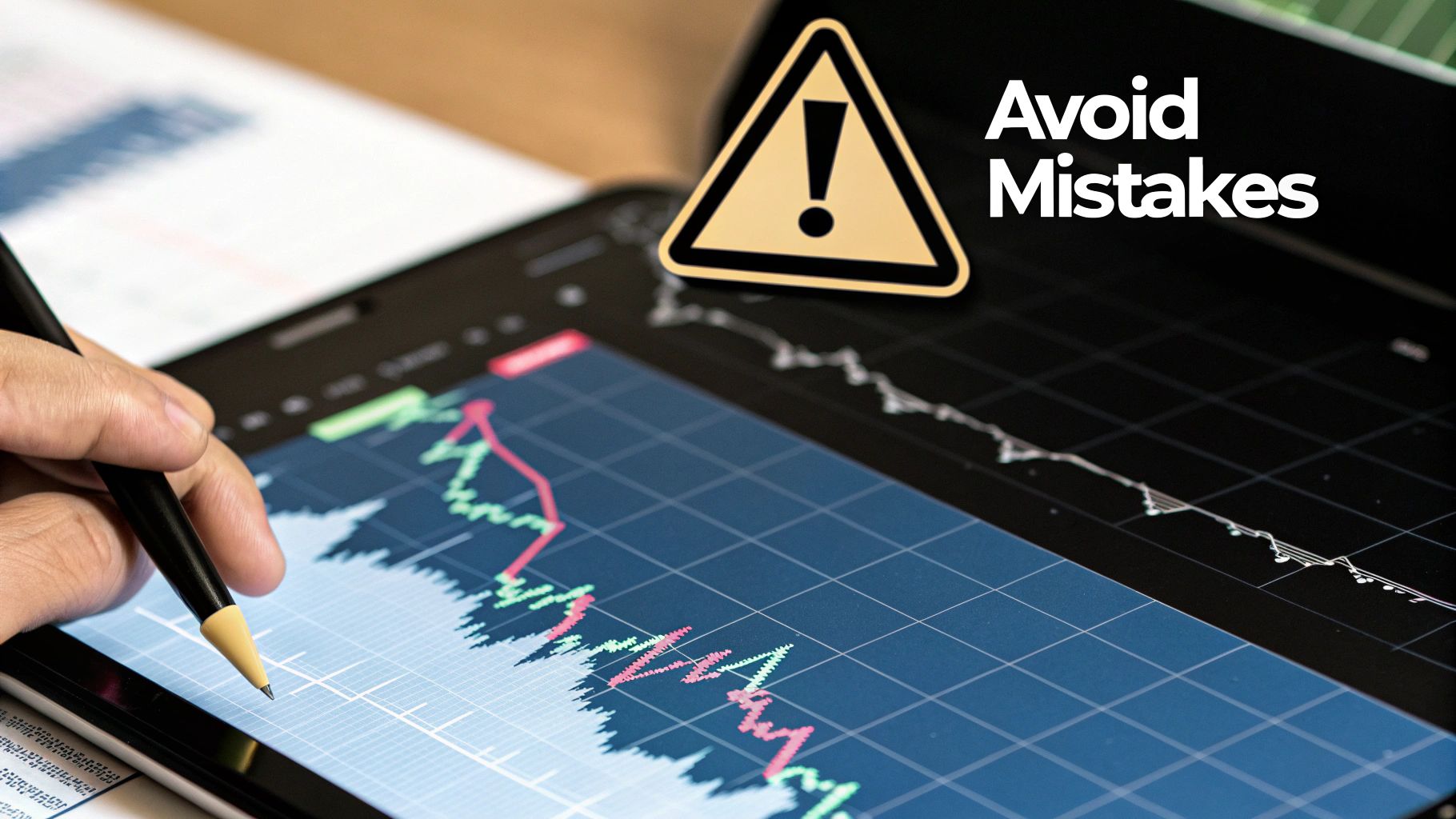What Is Stop Loss in Trading A Beginner’s Guide
What Is a Stop Loss Order?
A stop loss order is an instruction you give your broker to sell a position once it hits a set price. It acts as an automatic safety net, designed to limit your potential loss without you having to watch the market every second. In effect, it turns your exit plan into a hands-free shield, protecting your capital even when you’re away from the screen.
Your Safety Net in the Financial Markets
Think of a stop loss order like a smoke detector in your home. When smoke reaches a threshold level, the alarm sounds—hopefully stopping a small problem from becoming a catastrophe. In trading, you set a price “alarm” in advance; if the market dips to that level, your position is sold, capping the downside.
Traders rely on this simple tool for 3 key reasons:
- Removes Emotion: By locking in your maximum loss before you enter a trade, you avoid panic-selling when the market swings.
- Automates Defense: You’re not chained to your screen; the stop loss order fires off on its own, even in fast-moving markets.
- Preserves Capital: Its core job is to protect your account balance, so one bad move can’t wipe you out.
Mastering this mechanism is the first step toward disciplined trading. To explore deeper tactics, check out our guide on risk management for traders. Defining your exit point ahead of time transforms your approach from guesswork into strategic risk-taking.
Stop Loss Orders at a Glance
Below is a quick overview of the core functions and benefits a stop loss order provides.
| Function | Description | Primary Benefit |
|---|---|---|
| Risk Limitation | Automatically sells an asset when its price hits your threshold. | Protects trading capital from large, unexpected losses. |
| Trading Discipline | Forces you to set your maximum acceptable loss before entering a trade. | Reduces emotional decision-making and enforces consistency. |
| Automation | Executes without manual input once triggered. | Frees you from constant market monitoring. |
In summary, a stop loss order is a small but powerful safeguard. It keeps your emotions in check, automates your defense, and ensures that a single trade can’t derail your entire strategy.
How Stop Loss Orders Actually Work
So, how does a stop-loss actually protect your trade? The best way to think about it is as a two-step process. When you place a stop-loss, you’re not telling your broker to sell right away. You’re giving them a conditional command: "If the price hits this specific level, then sell my shares."
I like to picture it as setting a digital tripwire for my position. As long as the stock price stays safely above that wire, everything is quiet. Nothing happens.
But the second the price falls and touches that tripwire, it triggers an immediate action. Your conditional instruction instantly becomes a live market order, telling your broker to sell your position at the very next price they can get.
From Trigger Price to Execution
Let's walk through a real-world scenario to make this crystal clear.
Imagine you just bought 100 shares of a company, let's call it TechCorp, at $50 per share. You've done your homework, but you're a disciplined trader. You decide you’re only willing to risk $5 per share on this idea.
- Set the Stop Price: You place a stop-loss order at $45. This is your trigger, your line in the sand.
- Market Action: The trade goes against you. The stock starts to fall, and eventually, the price hits $45.
- Order Activation: The moment it touches $45, your stop-loss order is triggered. It is now a live market order to sell your 100 shares.
This is where a lot of new traders get tripped up. Your stop price of $45 is the trigger, not a guaranteed sale price. If the market is moving fast or there's a lot of selling pressure, the next available price might be a bit lower, maybe $44.95.
That small difference between your trigger price and the price you were actually filled at is called slippage. It's a normal part of trading, especially in volatile markets.
Key Takeaway: A stop-loss order is a trigger that becomes a market order. Its job is to get you out of a losing trade automatically, not to promise you an exact exit price.
What's really interesting is how these orders can ripple through the market. When a key price level is breached, it can trigger a cascade of stop-loss orders from thousands of traders at once, which can dramatically accelerate a price drop. In fact, one study found that the very presence of stop-loss orders can increase market volatility by about 27%. You can dig into the research into stop loss impact if you're curious.
Getting a handle on this basic mechanic is the absolute foundation for using stop-loss orders effectively in your trading.
Choosing the Right Type of Stop Loss Order
Not all stop loss orders are created equal. Far from it.
Picking the right one really boils down to your trading strategy, how much risk you're comfortable with, and what the market is doing right now. Think of them as different tools for different jobs. A basic stop loss is like a fixed anchor, while others are more dynamic, adjusting as a trade moves in your favor.
Making the right choice here is a cornerstone of solid risk management. Using the wrong type can mean getting kicked out of a good trade too early or, even worse, watching your hard-won profits evaporate. Let's break down the three essential types every trader needs to have in their toolkit.
This infographic gives a great visual of the main paths a trader can take when setting up their safety net.
Each of these signposts represents a distinct strategy for protecting your capital, from simple exit points to more advanced profit-locking mechanisms.
The Static Stop Loss
This is the one most people are familiar with—the classic static stop loss, or just a "stop order." It’s straightforward: you set a specific price, and if the market hits that price, your position is closed. That's it.
It’s a fixed line in the sand that only moves if you manually go in and change it. This approach is perfect for traders who have a crystal-clear exit point in mind, maybe based on a key support level or a maximum dollar amount they're willing to risk on a single trade.
A static stop loss brings clarity and discipline to your trading. You define your maximum acceptable loss before you even enter the trade and stick to it, taking raw emotion out of the equation once things are in motion.
The Trailing Stop Loss
Now, for something a bit more dynamic: the trailing stop loss. Instead of picking a fixed price, you set a "trailing" value—either a percentage or a specific dollar amount below the current market price.
Here's the clever part: as the asset's price moves in your favor, the stop loss automatically "trails" behind it, moving up to lock in your profits. If the price suddenly reverses and hits your trailing stop, the trade closes, securing the gains you've made. It's a fantastic way to let your winners run during a strong trend while still protecting your downside.
An 11-year analysis of trading strategies found that dynamic approaches like trailing stops often outperformed static ones. That same study showed that even a simple 10% static stop loss slashed maximum monthly losses from a painful -49.79% down to a much more manageable -11.34%. It just goes to show the raw protective power of any stop.
If you want a deeper dive, you can learn more about how a trailing stop loss works in our detailed guide.
The Stop-Limit Order
A stop-limit order adds an extra layer of price control, which can be a lifesaver in volatile markets. This order uses two price points: a stop price and a limit price.
When the market hits your stop price, it doesn't just trigger a sell-at-any-price market order. Instead, it activates a limit order that will only execute at your specified limit price or better. This is great for preventing major slippage during a market flash crash, but it comes with a trade-off. The big risk is that the price could gap right past your limit, leaving your order unfilled and your position unprotected.
Choosing the right stop-loss order is a critical decision. To make it easier, here's a quick side-by-side comparison of how they stack up.
Comparing Stop Loss Order Types
| Order Type | How It Works | Best For | Key Risk |
|---|---|---|---|
| Static Stop Loss | Triggers a market order at a fixed, predetermined price. | Traders with a clear exit plan based on support/resistance or a max dollar loss. | Can get stopped out by minor, temporary price fluctuations. |
| Trailing Stop Loss | The stop price automatically moves up as the trade becomes more profitable. | Capturing profits in a strong trending market while still managing risk. | A sharp but temporary pullback can trigger the stop and close a good position. |
| Stop-Limit Order | Triggers a limit order at the stop price, only filling at the limit price or better. | Avoiding slippage in highly volatile or thin markets. | The order might not get filled at all if the price gaps past the limit. |
Ultimately, the best order type is the one that aligns with your market outlook and risk management rules. There's no single "best" choice—only the best choice for a specific trade.
Strategic Placement for Your Stop Loss
Placing a stop loss is definitely more art than science, a crucial skill that separates theory from real-world trading. A great stop gives your trade breathing room for normal market swings but still yanks you out before a real disaster strikes. Set it too tight, and you'll get stopped out constantly on meaningless noise. Set it too wide, and you're just taking on way too much risk.
The real key is to place your stop at a level that, if the market hits it, proves your original trade idea was flat-out wrong. Let's dig into a few proven ways to find that perfect spot.
Finding Your Ideal Exit Point
One of the most straightforward techniques is the Percentage Method. With this, you simply decide on a fixed percentage of your trade's value you're willing to risk. For example, if you buy a stock at $100, a 5% stop loss goes right at $95. It’s simple, for sure, but it completely ignores how volatile an asset actually is.
A more technical way to go about it is using Support and Resistance levels. These are price zones where, historically, an asset has struggled to drop below (support) or climb above (resistance). A classic strategy is to place your stop just below a major support level. A clean break of that level often signals a real shift in market sentiment.
A strategically placed stop loss isn’t just an exit plan; it's a validation point for your trading thesis. When the market hits your stop, it’s signaling that the conditions you based your trade on are no longer valid.
For a more advanced approach, you can use volatility indicators like the Average True Range (ATR). The ATR tells you how much an asset typically moves over a given time. By setting your stop at a multiple of the ATR (say, 2x ATR) below your entry price, you're basing your risk on the asset's actual, recent volatility. This makes your stop adaptive to what the market is doing right now. When placing your stop, you also have to think about things like the underlying asset's liquidity in cryptocurrency markets to avoid getting hit with ugly slippage on your exit.
Ultimately, where you place your stop loss is directly tied to another critical piece of the puzzle: your position size. Once you know your exit point, you can calculate the exact number of shares to buy while staying within your risk limits. You can make this part of the process a lot easier by using tools like a position size calculator to make sure every single trade sticks to your risk management rules.
Common Stop Loss Mistakes to Avoid
A poorly placed stop loss can hurt you just as much as not using one at all. It’s a powerful tool, no doubt, but some common pitfalls can turn this safety net into a source of constant frustration and needless losses. Getting a handle on these errors is the first step toward building the discipline you need to survive in the long run.
The most common mistake I see traders make is setting their stop too close to their entry price. It feels responsible, right? You’re limiting your risk to a tiny amount. But this approach completely ignores the natural ebb and flow of the market. You'll get "stopped out" by normal price wiggles, only to watch in frustration as the trade takes off in your intended direction without you.
On the flip side, setting your stop too wide is just as dangerous. This usually comes from a place of hope—giving a trade way too much breathing room to "work out." In reality, you're just exposing your account to a massive, unacceptable risk. It completely defeats the entire purpose of a stop loss in the first place.
The Emotional Errors
Forget the technicals for a second. The biggest threat to your stop-loss strategy is your own emotions. The single most destructive habit a trader can have is moving a stop loss further away once a trade starts to go sour. This one action rips up your entire trading plan, swapping disciplined risk management for blind hope.
A stop loss is your pre-commitment to a maximum acceptable loss. Moving it is like disabling your smoke alarm during a fire because you don't like the noise. It's a direct path to a catastrophic account blow-up.
Another thing to watch out for is the herd effect. During crazy volatile periods, a big cluster of triggered stop-loss orders can create a "price cascade," causing a market drop to accelerate at an alarming speed. We saw this during a dollar-yen flash crash where one stop triggered another and another, causing a massive plunge without any real news behind it. You can review the findings on stop-loss induced price cascades to see just how powerful this phenomenon is.
So, how do you steer clear of these landmines? Stick to a few clear rules:
- Respect Volatility: Don’t just guess. Use a tool like the Average True Range (ATR) to place your stops outside of the market’s normal background noise.
- Calculate Risk First: Figure out your stop level before you even think about hitting the "buy" button. Then, calculate your position size based on that pre-defined risk.
- Never Widen a Stop: Once it’s set, it’s set. The only time you should ever touch your stop is to move it in the direction of a winning trade to lock in your profits. Period.
Common Questions About Stop Loss Orders
To wrap things up, let's tackle a few of the most common questions traders have when they're first getting the hang of stop loss orders. These are the practical, real-world issues that pop up when you're in a live trade.
Does a Stop Loss Guarantee My Exit Price?
No, a standard stop loss doesn't lock in an exact exit price. Think of it as an instruction, not a guarantee. When your trigger price gets hit, your stop loss converts into a market order, which then executes at the very next price available.
In fast-moving or gappy markets, this can lead to “slippage.” That's when your actual exit price is worse than your intended stop price. While a stop-limit order gives you more control over the price, it comes with its own risk: if the market blows past your limit price too quickly, your order might never get filled at all.
Should I Use a Stop Loss on Every Single Trade?
For most active traders, especially those working with short-to-medium-term strategies, the answer is a resounding yes. Using a stop loss is a foundational part of risk management and is absolutely essential for protecting your trading capital.
However, a long-term "buy and hold" investor might see things differently. Since they aren't sweating the small, short-term price swings, they might choose not to use them. In the end, it really comes down to your personal trading style and time horizon.
A stop loss is your pre-commitment to a maximum acceptable loss. For an active trader, removing it is like navigating without a map; you might get lucky, but you’re more likely to get lost.
When Is It Okay to Adjust My Stop Loss?
Here's the golden rule: never, ever move a stop loss further down to give a losing trade more breathing room. That's not trading; that's hoping. It’s a classic mistake that replaces discipline with emotion and is a fast track to taking a huge hit to your account.
On the other hand, it's a very smart practice to move your stop loss up to lock in profits as a trade moves in your favor. This is exactly what a trailing stop does. You can do this manually by ratcheting your stop up just below new support levels as the price climbs, effectively protecting your hard-won gains from a sudden reversal.
At Colibri Trader, we teach traders how to master price action and risk management for consistent results. Our programs provide the no-nonsense guidance you need to trade with confidence. Unlock your potential today by visiting https://www.colibritrader.com.

